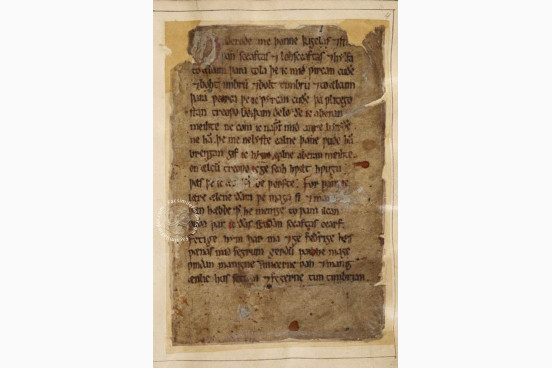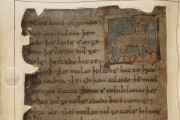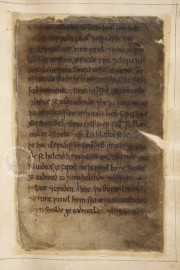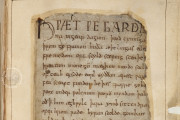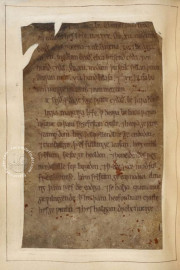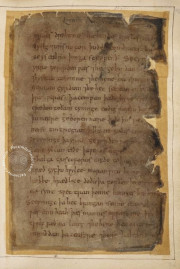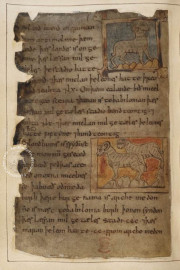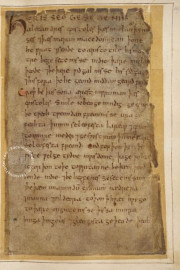Created around 1000 in England and named for its sixteenth-century owner, the Nowell Codex is famous for uniquely preserving Beowulf, the longest surviving poem in Old English. It also comprises an incomplete account of the death of Saint Christopher, one of three known copies of the Marvels of the East, the Letter of Alexander to Aristotle, and a poetic version of the medieval Christian biblical book of Judith. A common theme that runs through the various texts is the interest in the monstrous, making it a book of wonders. The Marvels is illustrated with twenty-nine miniatures of extraordinary creatures.
All the texts are in Old English, the Germanic language spoken in England from the fifth to the eleventh century, but only Beowulf is an original composition in the language. The other texts are all translations from Latin.
Marvels Pictured
The chapters of the Marvels of the East describe animals, semi-humans, and humans, purportedly to be found in Asia and Africa. We are told the name (when there is one) of each type of beast, where it dwells, what it looks like, and what it eats. The marvels range from big sheep to two-headed snakes to humans with enormous fan-like ears that serve as a pillow and blanket when they sleep.
The miniatures capture the appearance of the many marvels in framed drawings with colored backgrounds, usually orange or light blue. Among them are a dangerous two-horned donkey, a man with two faces, and a beast-headed man holding a human leg—presumably his next meal (fols. 99v, 101v, and 103v). A narrative involving dog-sized, gold-digging ants that attack a camel unfolds in one miniature (fol. 101r).
Beowulf and the Monsters
In the poem that bears his name, Beowulf slays the giant man-shaped Grendel, Grendel's beast-like mother, and a dragon, thus engaging "monsters," creatures understood to be anomalous. In this, the poem finds its place comfortably among the manuscript's other texts.
Saint Christopher is portrayed as dog-headed in the text concerning his martyrdom. The Marvels of the East is a catalog of beasts and aberrant humans, and the letter purporting to be from Alexander the Great to his teacher Aristotle is principally a description of the marvels he encountered in India. Judith describes the slaying of Holofernes, monstrous in the excessive drinking that led to his death.
English Vernacular
The texts were written by two scribes in long lines (a single column), with no attention paid to the poetic form of the verse texts. The script is English Vernacular Minuscule, used almost exclusively—as its name suggests—for texts in Old English. The first line of each text is written in majuscules.
Damaged by Fire
The Nowell Codex was in the collection of the English scholar Laurence Nowell in 1563. It forms the second portion of a composite codex created in the seventeenth century for Robert Cotton (1571-1631). The first portion comprises a twelfth-century manuscript of Old English adaptations of Latin texts and a few leaves from other manuscripts.
John Cotton (1621-1702), Robert's grandson, bequeathed the Cotton manuscripts to Britain, and the combined manuscript was damaged in the Ashburnham House fire of 1731, resulting in the loss of portions of text, both at the time and since. The Cotton manuscripts became part of the library of the British Museum upon its establishment in 1753, and, more than two centuries later, in 1973, entered the newly established British Library.
We have 1 facsimile edition of the manuscript "Nowell Codex": The Nowell Codex facsimile edition, published by Rosenkilde and Bagger, 1963
Request Info / Price
